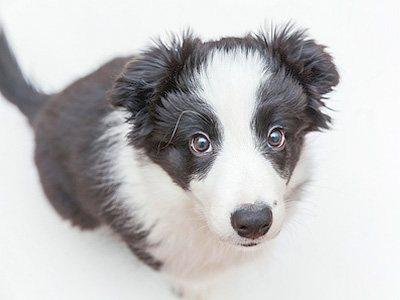
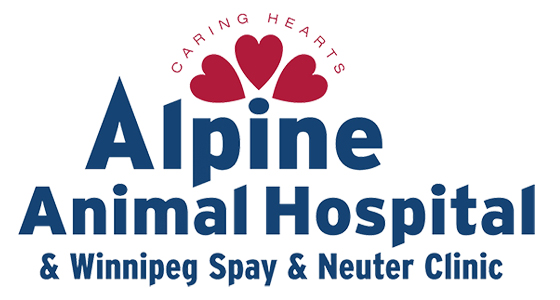
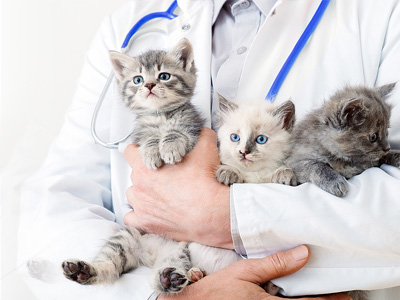
Alpine Animal Hospital can help you with consultation on your pet's optimal diet as part of a wellness program. Nutrition is KEY!
Just like us, our pets health starts and is fundamentally managed by nutrition which is their food. We have diets that range all the way from growth, wellness and preventative, senior to therapeutic to treat specific diseases.
Growth diets are important at supporting their juvenile immune system and ensuring the right foundation is formed for long term good health. But it doesn’t stop there!
We want to ensure they are always getting continuous complete and balanced nutrition designed for their needs so, that’s what our various adult and senior diets ensure.
Read below to see why Veterinary Diets differ from others!
We offer a large selection of veterinary science-based pet foods in stock. For more information please give us a call at 204-661-9090.
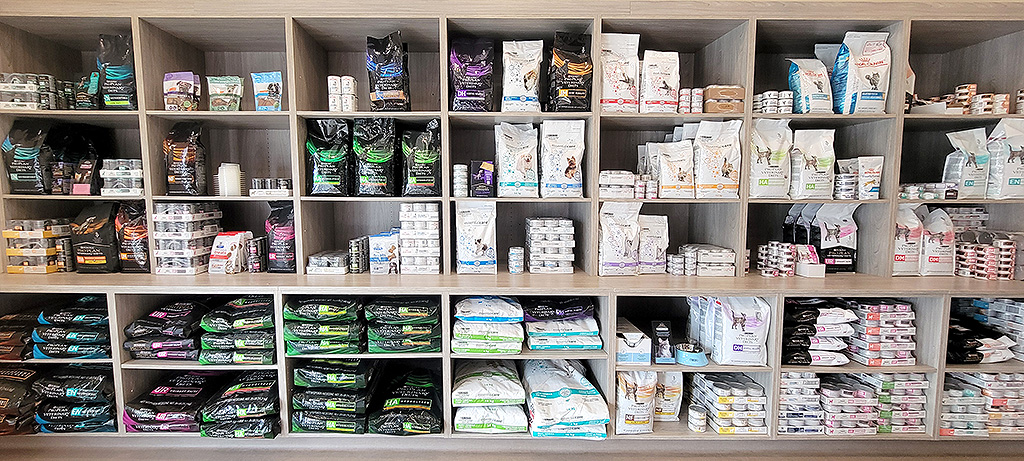
Changes in appetite
Just like you, if your pet feels unwell, their appetite can change, decrease or disappear. Dogs can be tolerable of short periods of fasting or no food, but cats are not tolerable of this. They have a need physiologically to eat everyday. If, you see any changes of appetite in your cat or dog, please contact us immediately as this is an indicator of something bigger happening.
Do not force feed your pet. Force feeding is not advised as there is high chance of aspiration (breathing in food) that can lead to aspiration pneumonia. In addition, it can create an aversion to food and can decrease their want to eat voluntarily. Please contact us as to how to proceed when your pet does not want to eat.
Dog's & Cat's Digestive System
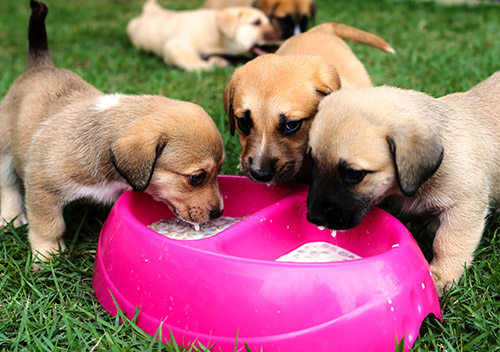 Dog’s and cat’s digestive tract is shorter than a human’s tract. Their natural diet needs to run through their digestive tract quickly, and carbohydrates or vegetables/fruits slow down the process and are hard to break down.
Dog’s and cat’s digestive tract is shorter than a human’s tract. Their natural diet needs to run through their digestive tract quickly, and carbohydrates or vegetables/fruits slow down the process and are hard to break down.
Each living being produces specific digestive enzymes to break down certain types of food. Dogs and cats produce a lot of “protease”, to digest protein. They produce very little to no “amylase”, that breaks down carbohydrates, and whatever amylase they do produce stays ready in the intestines. They do not produce “cellulase” which would break down fibre in vegetables and fruits.
They receive further enzymes from eating prey’s pancreas.
When we give cats and dogs ingredients they should not have, we disrupt the balance of good and bad bacteria in the intestines, needed for other tasks such as immune responses. Good bacteria help resist infection from bad bacteria, by controlling their population. But the digestive process takes precedence due to survival instinct.
Over time, it will lead to stress on the organs, as it is not responding to immune imbalance.
Their teeth and jaw are designed for shearing meat products and to grind down bone. They are not designed for many grains and vegetables.
Cats are obligate carnivores and are not able to survive on grains, vegetables or vegetarian/vegan diets
Nutrients and Balance Cats and Dogs Need
Cats need on average ~56% protein and ~24 % fat. The feline’s natural diet is whole prey animals and occasionally fruits and grasses.
Dogs need on average ~ 47% protein and ~ 41% fat. This can vary daily. The canine’s natural diet is whole prey animals and occasionally fruits and grasses.
Dogs and cats have 2 groups of protein: essential amino acids and non-essential amino acids. Essential amino acids must be present in the diet as the body cannot make them (arginine, histidine, isoleucine, lysin, methionine, phenylalanine, threonine, tryptophan, and valine). Cats need the same ones with the addition of taurine.
Taurine deficiency can cause a form of heart disease in cats. This amino acid is very heat sensitive (therefore we see it artificially added to kibble). Arginine is also important for the normal function of many bodily functions.
Cats cannot eat FISH. They may like the smell as fish has a pungent smell, but they physiologically do not do well with it. Specifically, fish causes a Thiamin deficiency (Vitamin B1) as it has Thiaminase. This deficiency causes neurological problems.
Fats are very energy dense nutrients (twice as much as protein). Cats and dogs benefit from a variety of fats.
Dogs do not have a high need of carbohydrates and cats do not need carbohydrates. Carbohydrates causes weight gain in cats and dogs, just as it does in humans.
All cats and dogs need fiber. Some fiber helps the bowels move and some keeps food in the stomach longer to keep them full. Some natural examples are fur, feathers, and internal organs of prey.
Cats and dogs need many vitamins and nutrients in different ratios. IE: they need more zinc than copper, for it to work properly in the body for immune health.
Kibble Breakdown and Pet Store Food vs. Veterinary Food
Kibble is more commonly used these days due to convenience, cost and the ability to tailor it to specific needs.
Kibble therapeutic diets have also come around to help specific conditions.
Many vitamins, minerals and some proteins are added to the food in addition to the ingredients. This is because they are very heat sensitive and are destroyed during the processing.
Purpose of ingredients- Varies depending on the ingredient. Most pet food companies, including the Veterinary Diets will provide a glossary of reason for each ingredient.
-Meat by-products: are any non-meaty?
Flesh not consumed by us– aka nutrient rich organ meats.
Pet store kibble vs Veterinary Kibble:
Many pet store brands will offer “All life stages”, but these do not tailor to the specific needs and requirements (protein, calcium, sodium) of puppy/kitten to adult.
Veterinary foods are carefully researched to the highest quality, and balance to best suit the needs of the lifestyle or the disease of the patient.
Pet store brands may not monitor the amounts of nutrients in their foods and, an excess can be dangerous to pets.
Pet Food Industry and Who Looks Over It
In the United States, the pet food industry is regulated by the FDA.
FDA’s regulation of pet food is similar to that for other animal foods. The Federal Food, Drug, and Cosmetic Act (FFDCA) requires that all animal foods, like human foods, be safe to eat, produced under sanitary conditions, contain no harmful substances, and be truthfully labeled.
In Canada, the pet food industry does not fall under any specific regulatory bodies.
In Canada, pet food companies can voluntarily become a member of the Pet Food Association of Canada (PFAC).
PFAC has regulations and guidelines similar to FDA Standards
AAFCO – The Association of American Feed Control Officials – is a non-profit organization that sets standards for both animal feeds and pet foods. The FDA in the United States requires them to be followed but in Canada it is a advisable guideline to follow.
The Veterinary Diets are held to higher standards and are required to do extensive quality control, testing, and research beyond FDA, PFAC, and AAFCO standards.